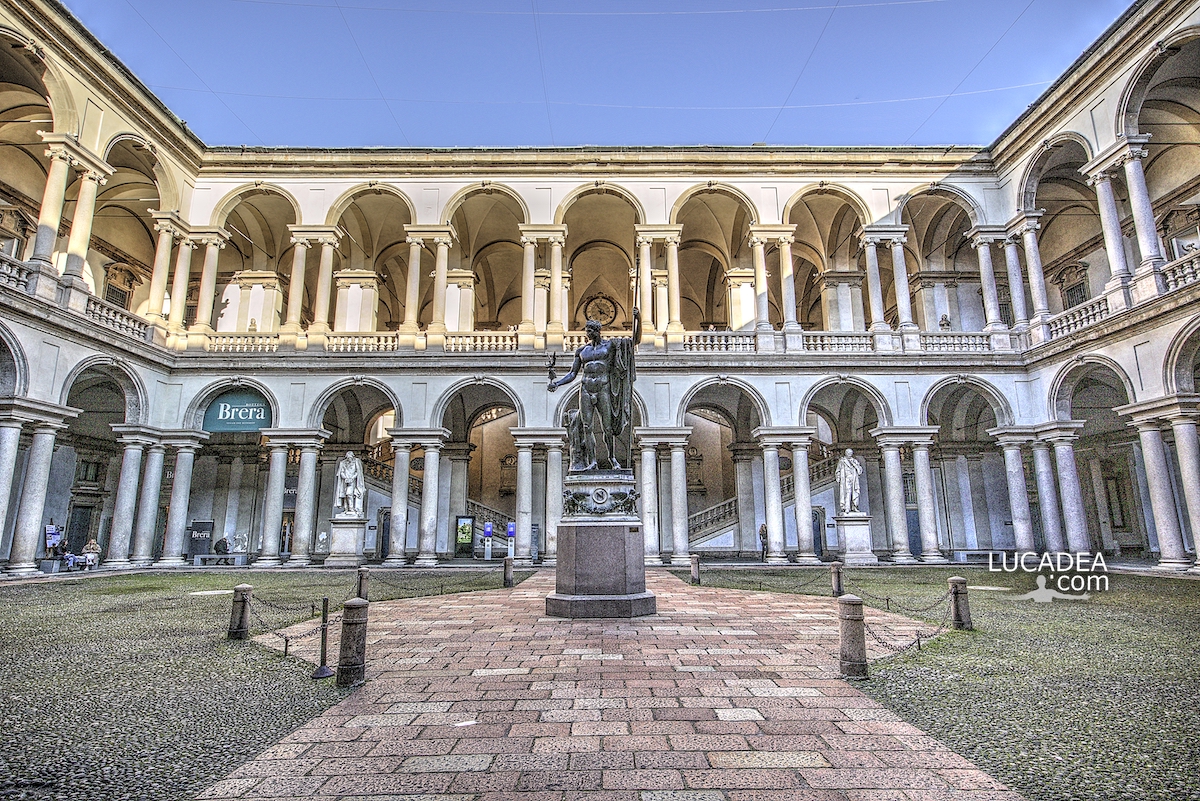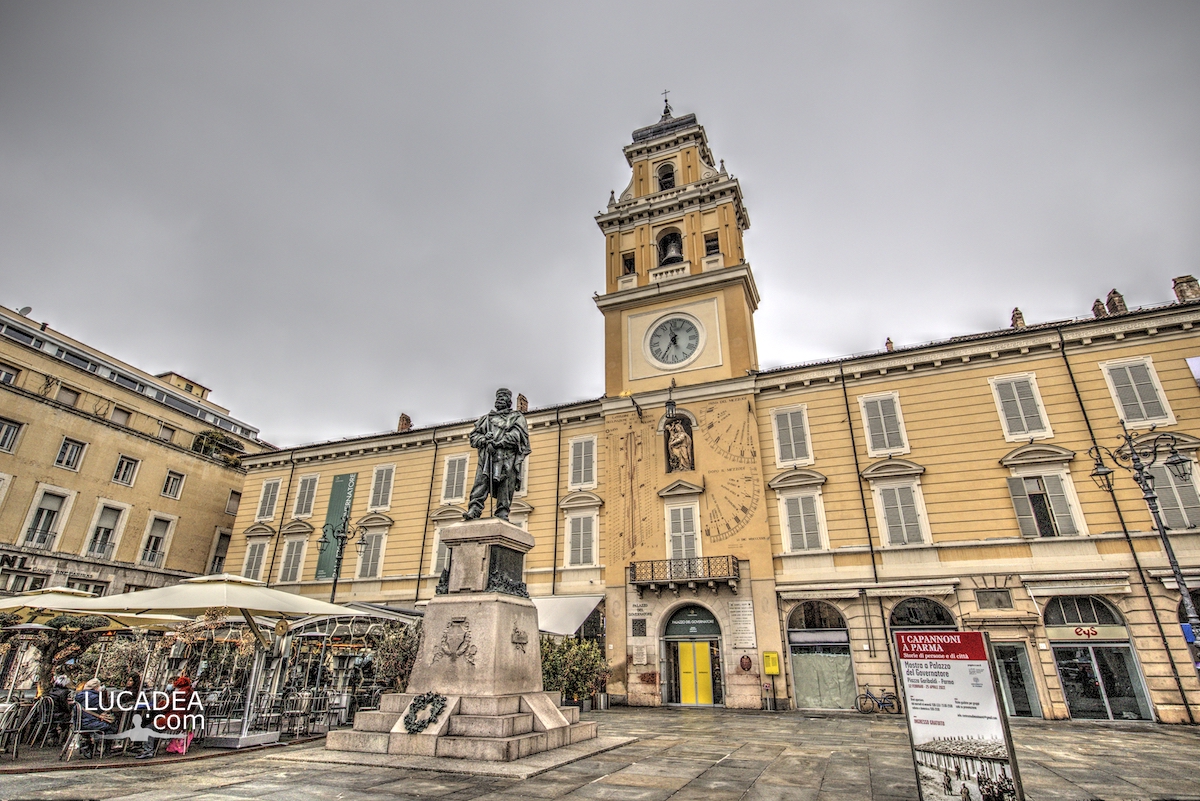Courtyard of Honour of the Brera Palace in Milan.
One of the most famous Italian cultural venues in the world. This is the entrance cloister to the palace which houses the Brera Art Gallery, the Braidense National Library and the Academy of Fine Arts.
In the centre of the courtyard is the bronze statue of Napoleon Bonaparte as Mars the Peacemaker (a copy of the marble statue by Antonio Canova, now in Apsley House in London).
Do you know Milan? Add a comment or go to the bottom of the site to read what other visitors have written.
Photo taken with Canon EOS M100 and lens Canon EF-M 11-22.
To see all the photos I took in the Milanese city click here:

Here's where the courtyard is located:
The courtyard, like the entire building, dates back to the first half of the 17th century and was originally built as a cloister for the monastery of Santa Maria di Brera, governed by the Jesuit order, until the religious institute was suppressed and made property of the state, which transformed the building into the headquarters of the new academy of fine arts and art gallery.
Continue and learn more on Wikipedia












